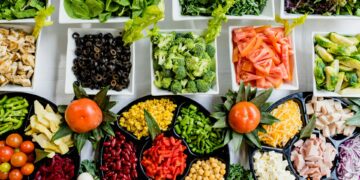Ultra-Processed Foods Take Over American Kitchens
A recent study reveals that ultra-processed foods have become a significant part of American diets, with more than half of the calories consumed at home now coming from these foods. Ultra-processed foods, which are high in sugar, fat, salt, and artificial ingredients, have been linked to serious health conditions such as heart disease, obesity, and type 2 diabetes. While many people associate these foods with fast food and junk food, the study points out that ultra-processed foods also include items that might seem healthier, complicating the issue for consumers.
Lead researcher Julia Wolfson from Johns Hopkins University explained that ultra-processed foods go beyond traditional fast food, with many products in grocery stores containing additives and artificial ingredients. These foods are becoming more prevalent in American kitchens and are reshaping the way people cook and eat at home. This shift has led to an increasing reliance on processed options, which tend to be easier to prepare, more affordable, and more shelf-stable than fresh, minimally processed ingredients.
The study, which analyzed data from U.S. health surveys between 2003 and 2018, categorized foods into four groups: unprocessed or minimally processed foods, processed ingredients, processed foods, and ultra-processed foods. Items like deli meats, snacks, frozen meals, and sugary drinks were considered ultra-processed. Meanwhile, minimally processed foods like fruits and vegetables, preserved without additional additives, were placed in a different category.
Findings from the research showed that the percentage of calories from ultra-processed foods at home increased from 51% in 2003 to 54% in 2018. This rise was especially noticeable among certain groups, such as higher-income households and Hispanic populations, who consumed ultra-processed foods at high rates. Conversely, the share of calories from minimally processed foods declined during the same period, falling from 33% to 29%.
Researchers emphasize the importance of addressing the prevalence of ultra-processed foods in American diets, particularly as they are becoming the go-to option for many families due to their convenience and low cost. To counteract this trend, Wolfson suggests clearer nutrition labeling that highlights the presence of ultra-processed ingredients, as well as strategies to help consumers make healthier food choices.

































Discussion about this post